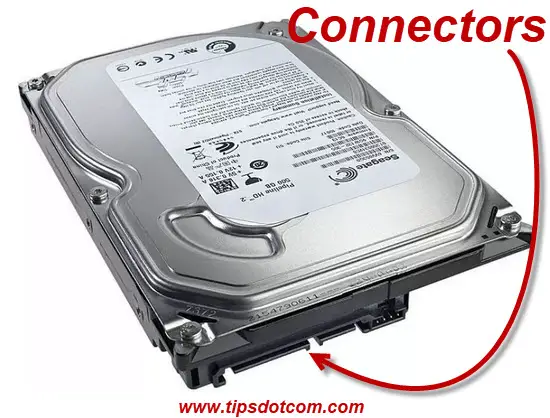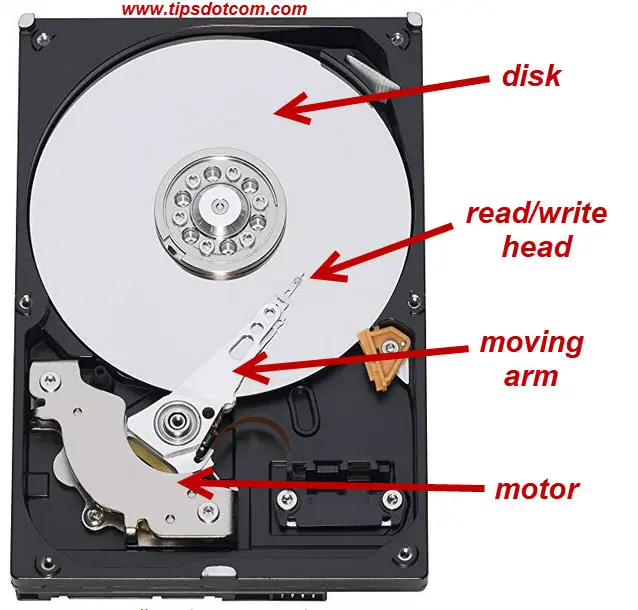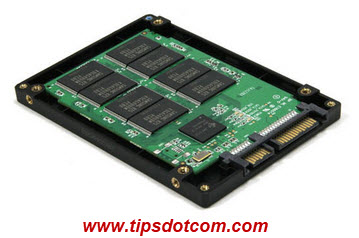SSD VS HDD
SSD hard drives are faster than their “regular” HDD counterparts. A lot faster. That is because they don’t contain any moving parts. Regular hard disk drives (HDD) depend on physical moving parts to power your computer experience and that, in a nutshell, is why the invention of SSD vs HDD has brought such an amazing opportunity to speed up your computer. SSD (Solid State Drive) drives no longer contain moving parts which, as we shall see, is the key reason they are so performant. I see the possibility of the RoadRunner (SSD) speeding away and disappearing in front of the regular HDD in a cloud of dust.
When SSD drives were first introduced, prices were (much) higher for SSD vs HDD. However, as SSD drives are becoming more and more popular, their prices have now come down to a level that’s much more affordable too.
An Inside View Of SSD VS HDD
Inside many older computers you will find a regular hard drive, which will look pretty much like the one in the image below (If you’re not sure whether your computer is equipped with a regular or an SSD drive, you can find out by this simple hard drive type detection trick.)
This is indeed what a somewhat older hard drive will look like: a metallic enclosure with connectors for power and data transfer.

Now if you would take off the lid of the enclosure and take a look at
the inside of a regular hard drive, it would look like this (I have indicated some of the parts):

The way it functions can somehow be compared with a vinyl record player. The disk inside a hard drive spin pretty much like the record on a record player. A record player also has a “tonearm”, which can be compared to the moving arm inside a hard drive. One difference is that the tonearm will passively follow the groove in the vinyl record, whereas the arm inside a hard drive is actively and constantly positioned in the right places by the motor. This is a continuous process whereby the arm is vigorously being positioned back and forth in order to read and write the stream of data that is necessary to keep your programs running.
The speeds at which the disks inside a hard drive are spinning can be anywhere from 5400 rpm to 10K rpm and higher and the arms’ moving speed can also be quite impressive, but they don’t come anywhere near the speed at which information is transferred electronically.
And that’s exactly what SSD’s do: they process data electronically instead of relying on moving parts. Inside an SSD there are no physical disks, nor arms or motors, just microchips capable of storing and transferring data at nearly the speed of electrons.
That is the reason why ssd vs hdd drives are much, much faster.
Right below I have added an image of an SSD drive that has been opened. As you can see, there are no moving parts, just a bunch of memory modules.

Power Consumption
In addition to being a lot faster, SSD drives come with another amazing benefit that can considerably improve your computer experience. Solid State Drives consume less power than their regular hard drive counterparts, for the same reasons that drive the performance benefits: no moving parts.
The mechanical motion involved in rotating disks and positioning arms requires the use of motors inside a hard disk. Since motors need energy to operate, SSD hard drives are also going to be more energy-efficient. While you may not immediately notice much of that in a desktop computer, you will definitely feel the difference with SSD vs HDD in terms of battery life.
Actual Speed Improvement Of SSD vs HDD
If you are looking for real numbers or benchmark results to get a more tangible idea of exactly how much you can speed up your computer with an SSD drive, I'm going to have to disappoint you. I don't have any benchmark tables or graphs that plot SSD vs HDD performance results. The goal of this article was to explain a bit the advantages and benefits of SSD drives vs regular hard drives, not get into detailed benchmark results.
I have upgraded quite a few computers with an SSD drive though and on several occasions I did indeed measure how long it took to boot Windows to the desktop. While I have no documented reports of that, I can tell you that startup time can realistically be expected to be reduced from several minutes to 20 seconds or less by upgrading to an SSD.
Also the time it takes to start programs or browse the internet can be drastically improved wit the use of an SSD drive.
Conclusion
With prices for SSD drives now becoming more affordable, the best setup for your computer will almost always be an SSD drive. Performing better in the speed department as well as energy consumption, SSD vs HDD definitely can improve your computer experience.
If you’ve found this article helpful, please like my page by clicking the button below or leave a short comment. I’d appreciate it, thank you!
Related: Samsung Data Migration error.
If you've enjoyed this article or found it useful, I'd appreciate it if you'd let me know by clicking the Like (or Share) button below. Thank you!






New! Comments
Have your say about what you just read! Leave me a comment in the box below.